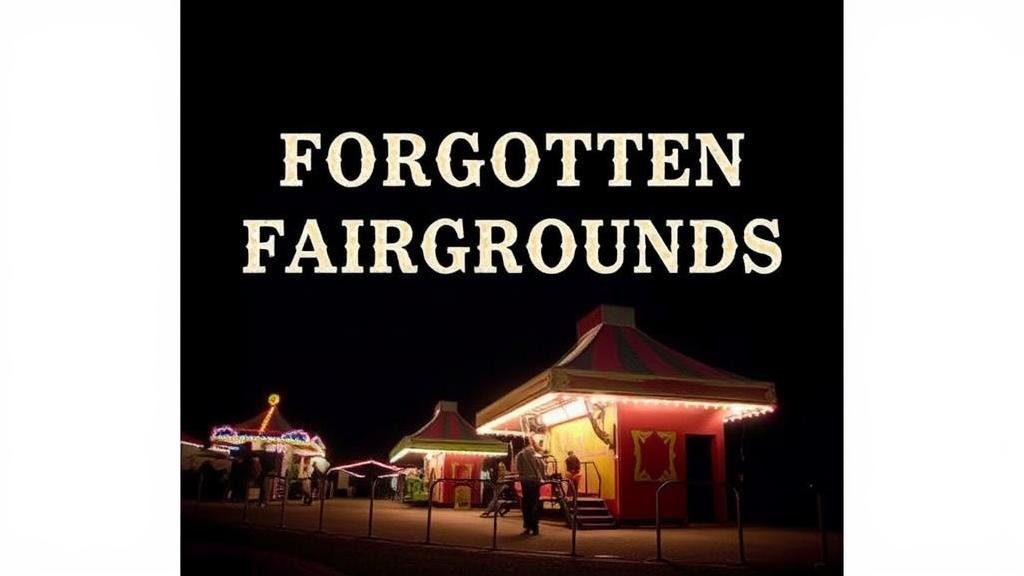Forgotten Fairgrounds: Tracing the History of Traveling Carnivals for Relics
Introduction
Traveling carnivals have a rich history that mirrors the evolution of leisure, culture, and technology in the United States from the mid-19th century to the present. These mobile fairs not only provided entertainment but also served as a unique cultural artifact, embodying regional diversity and societal trends. This article aims to trace the history of traveling carnivals and explore their legacy through the examination of forgotten fairgrounds across the nation.
The Origins of Traveling Carnivals
The origins of traveling carnivals can be traced back to the mid-1800s with the advent of circuses and local fairs. first significant traveling show was Phineas Taylor Barnums circus, which began touring in 1871. By the late 19th century, the combination of acrobatics, clowns, and animal acts drew large crowds and sparked the development of traveling carnivals.
Examples of early carnivals include the 1890s Cole Brothers Circus, which showcased a variety of performances, and the Royal American Shows, which became a standard in the carnival circuit by the 1920s. These shows traveled across the country, often setting up in empty lots or fairgrounds.
The Structure of Early Carnivals
Traveling carnivals were typically composed of several key elements that contributed to their allure, including:
- Midway Attractions: Games of chance and skill, such as ring toss and dart throwing, were designed to entice attendees.
- Exciting Rides: Ferris wheels and carousel rides were popular attractions that combined mechanical ingenuity and entertainment.
- Live Performances: Circus acts, animal shows, and sideshows featuring unique individuals formed the core of carnival entertainment.
The Decline of Traveling Carnivals
By the late 20th century, traveling carnivals began to face significant challenges resulting in their decline. Factors contributing to this shift included:
- Regulatory Changes: Increased safety regulations and insurance costs made operations more burdensome.
- Competition from Amusement Parks: The rise of permanent amusement parks, like Disney World, offered more attractions, leading to decreased attendance at traveling shows.
- Cultural Shifts: Changing entertainment consumption patterns, particularly with the advent of home entertainment technologies, shifted public interest away from traditional carnivals.
As a result, many traveling carnivals, once a staple of American summer entertainment, began to fade away, leaving behind abandoned fairgrounds across the nation.
Forgotten Fairgrounds: A Cultural and Historical Study
The remnants of once-thriving carnivals can be found in many states, serving as reminders of the unique social fabric that these events created. For example, the site of the defunct Sarasota Fairgrounds in Florida, which was once a hub for carnival activity, is now largely underutilized, despite its historical significance.
Similarly, the Old Orchard Beach Pier in Maine showcases remnants of traveling fairs from the early 20th century, now replaced by modern entertainment forms but still holding historical relevance.
Case Study: The Sarasota Fairgrounds
Located in Sarasota, Florida, the fairgrounds hosted several carnivals over the decades. Originally established in the late 1920s, it featured carnival games, various rides, and live performances. In recent decades, however, the fairgrounds have largely fallen into disrepair, with only a handful of events taking place annually.
Preservation efforts are underway to rekindle interest and restore some of the historical structures, highlighting the fairgrounds role in local culture.
Case Study: The Old Orchard Beach Pier
The Old Orchard Beach Pier has historically been a venue for carnivals and fairs since the early 1900s. The pier, which was a vital part of the travel circuit, hosted many traveling shows until the emergence of more permanent entertainment venues diminished its role. Community initiatives are now focusing on celebrating its legacy, including heritage festivals that feature aspects of carnival culture.
The Lasting Legacy of Traveling Carnivals
Despite their decline, traveling carnivals have left an indelible mark on American culture. played a vital role in shaping social interactions, showcasing regional talents, and promoting local economies. Events that once drew thousands of visitors support the idea of community in ways that modern attractions often overlook.
Further research into forgotten fairgrounds highlights the importance of preserving these sites as educational tools that offer insight into the cultural practices of the time.
Conclusion
In summary, traveling carnivals symbolize a unique fusion of entertainment, community, and innovation. While many fairgrounds have been left behind in a rapidly changing world, they serve as invaluable historical relics. By retracing their histories, we can better appreciate the impact of traveling carnivals on American society and the legacy that continues to be relevant today.
Future efforts should focus on preservation and community engagement to keep the spirit of these vibrant traditions alive.



